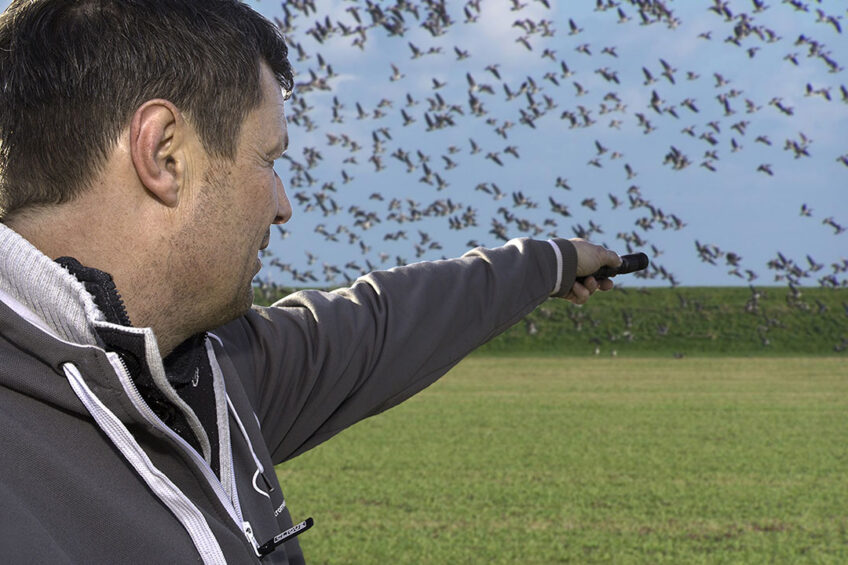Bird flu genetic make-up different from previous years

Lockdowns due to spreading viruses are continuing to affect UK poultry and captive bird owners and scientists say the latest research into this year’s avian influenzas shows a different genetic make-up.
The number of outbreaks this year has been the most extensive ever across the UK with more than 50 cases, compared to just 26 last year. Testing and surveillance of wild birds has shown that there is a high prevalence of the virus currently in birds, and this is contributing to the spread of disease to farm and domestic bird populations.
Dr Holly Shelton, head of Pirbright’s Influenza Viruses group, is looking at understanding how genetic changes in influenza A viruses can impact disease spread, host responses to infection and the pathology associated with the disease.
Shelton said avian influenza viruses are different to those that can infect humans in that they cannot easily infect and must change and adapt to do so. Aquatic birds are a natural reservoir for avian influenza viruses but typically experience fewer clinical symptoms despite spreading the disease to domestic birds in the migratory season between October and March.
Bird migration
Responding to questions on what was causing bird flu outbreaks in domestic birds, she said: “In the spring and summer months these birds spend their time breeding and raising their young in north-eastern Asia where they mix with other bird species. This enables virus transmission and mutation. Then, when they migrate for the autumn and winter months, they shed virus in their faeces along the way. “One of the migratory paths is across northern Europe and this includes the UK. This year in the UK, avian influenza was first discovered on 15 October in captive aquatic birds. To date (17 December), there have been 50 outbreaks in England, 1 in Wales and 2 in Scotland. This has resulted in over half a million birds being destroyed to control the spread of the disease.”
Testing and surveillance
Government testing and surveillance of wild birds has shown a high prevalence of the virus in these birds which was contributing to the spread of the disease to farm and other domestic bird populations. The Royal Society for the Protection of Birds said this week that avian influenza had already killed more than 850 barnacle geese at its Mersehead reserve near Dumfries.
“We are probably approaching 4,000 – certainly over 3,000 – mostly barnacle geese. It is pretty large scale and likely to get worse. It is unprecedented. I have worked in the area for 25 years and I don’t ever remember us seeing this many birds dying,” said the charity’s area manager, Andrew Bielinski.
Poultry World edition 10 of 2021 now online
This 10th edition of Poultry World highlights the importance of managing stress to improve broiler welfare and improve returns. Veterinary virologist, Professor Hans Nauwynck, notes that the way the veterinary world keeps viruses under control is an example for human virology. Then, a look at the state of soybeans and sustainability concerns around its high consumption in poultry production, and a visit to Australia to see how Ingham’s has invested to meet future demands. Read more…
“A more detailed look at the genetic make-up of these viruses shows that they are different to those from previous years. This is predicted to be as a result of the virus infecting multiple birds across a range of species, and this provides the perfect opportunity for the virus to evolve. “Analysis of these genetic changes does not raise any alarm bells for increased transmission to humans, but they likely impact the spread and severity of disease in birds.”
Enhancing control
Research at Pirbright is looking at enhancing control and detection of avian influenza as well as extending knowledge about the virus in avian and mammalian hosts. The Influenza Viruses group is involved in the assessment of which avian influenza virus strains can rapidly adapt to cause potential infections of humans. In addition, Shelton’s group is mapping the changes in the chicken respiratory and gastrointestinal microbiome following virus infection and assessing whether the application of probiotics can be useful in controlling virus shedding or transmission in birds.
The Influenza Group, led by Professor Munir Iqbal, is developing improved poultry vaccines that can prevent virus replication and spread. These vaccines are particularly useful in countries where avian influenza is regularly found in the domestic poultry and the control of prevention of spread isn’t easy, such as the UK.












